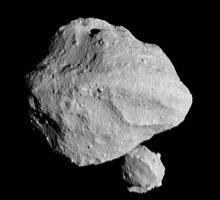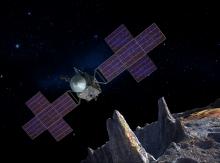Listen to today's episode of StarDate on the web the same day it airs in high-quality streaming audio without any extra ads or announcements. Choose a $8 one-month pass, or listen every day for a year for just $30.
You are here
Early Test
Osiris-Rex is still a couple of years away from its destination. But the spacecraft will give one of its instruments a check-out over the next couple of weeks by hunting for asteroids that share Earth’s orbit around the Sun.
Such asteroids are known as Trojans. They’re found in clumps that are 60 degrees either side of a planet. They’re “herded” by the planet’s gravity, like a sheepdog keeping its flock in place.
Thousands of Trojans share the orbit of Jupiter, the solar system’s largest planet. Others have been discovered in the orbits of all the other planets except Mercury and Saturn, including one that’s known to accompany Earth. It was discovered in 2010, by another spacecraft. There could be more, though, so Osiris-Rex will take a look.
The craft, which was launched in September, is headed for a rendezvous with an asteroid named Bennu in late 2018. It’ll fly along with the asteroid for many months, then touch down and grab a small sample for return to Earth in 2023.
Beginning tomorrow, though, it’ll use one of its cameras to scan for Trojans ahead of Earth. The camera’s designed to find small rocks in orbit around Bennu, so looking for larger rocks that are farther away should be a good test.
Over the next couple of weeks, the camera will scan the entire region where Trojans might exist. That could tell us whether any more space rocks share our planet’s orbit around the Sun.
Tomorrow: a faint lunar eclipse.
Script by Damond Benningfield






